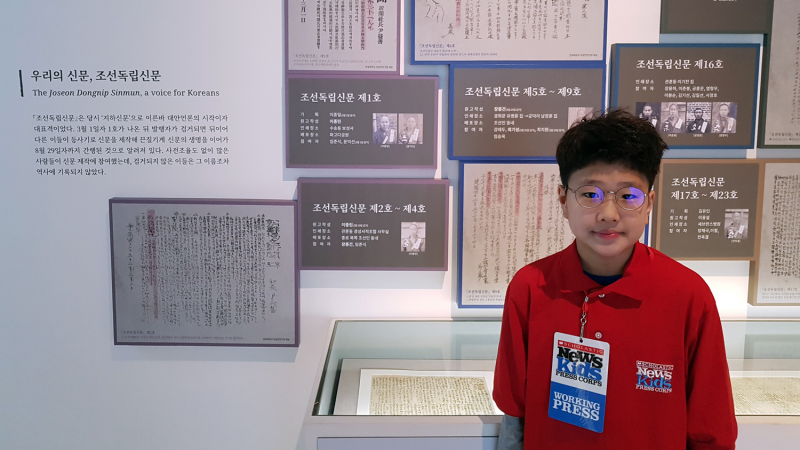
As the school year draws to a close, we’re reflecting on the accomplishments of our Scholastic News Kid Reporters. Since September, a team of 45 students has been covering events around the world. They’ve talked with actors, astronauts, authors, filmmakers, and more.
I recently asked our young journalists which assignments had made the biggest impression on them. “I’d have to say going to a wolf sanctuary and spending the night there,” said the intrepid Ava Park-Matt of New Jersey. (Add animals to the list of interviewees.)
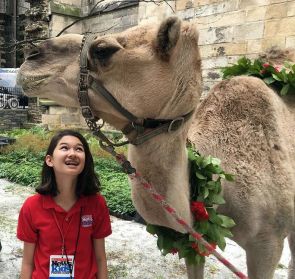
Ava, 14, definitely loves creatures of all kinds. When she covered the annual Blessing of the Animals at a New York City cathedral last fall, the best part, she says, was getting to mingle with camels and tarantulas.
For Titus Smith III, covering a NASCAR race in Michigan offered a rare thrill. Not only did Titus interview some of the top racers in the sport, but he also spent time in the pressroom where a local reporter interviewed him.
Titus, 13, learned that “reporters are on a tight schedule and must work hard to write stories quickly and accurately.”
Emma Garcia, 13, of Mexico, remembers the excitement of covering the annual Night of the Radishes festival in Oaxaca. “I got to see firsthand the love and dedication that people have for what they do,” she says.
One of Emma’s “favorite parts of journalism is getting to interview people. A moment before or after the interview, I'll just start talking with them. I get pretty cool personal details and learn about their struggles.”
The role of journalists, Emma adds, is to “serve as a sort of bridge, sharing people’s experiences, achievements, goals, and problems, thus helping to improve other’s knowledge of the world and, ultimately, create more informed citizens.”
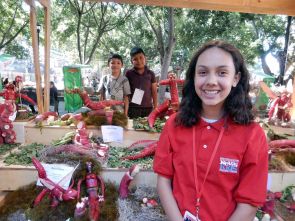
Nolan Pastore, 13, of Ohio, loved interviewing Snowball, a Shih Tzu Chihuahua Mix that was rescued by a reporter on assignment and now has a thriving modeling career.
“Snowball often gets to travel for work,” Nolan reported. “He prefers flying over driving.” A special backpack allows Snowball to travel on flights with his owner, Jami Kinton.
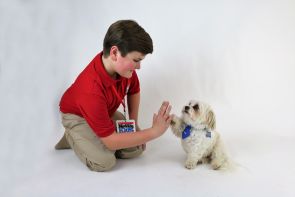
“Don’t be afraid to ask”
Alula Alderson, 12, of California, has had a few thrills of her own, including getting to ask actress Brie Larson a question at a press conference for Captain Marvel. She also got advice for aspiring filmmakers from directors Anthony and Joe Russo after seeing Avengers: Endgame.
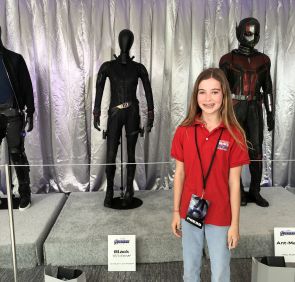
Marley Alburez, 13, of New York, says that a highlight for her this year was interviewing authors Renée Watson and Ellen Hagan at the I, Too Arts Collective in Harlem. The arts center is in a brownstone where Langston Hughes once lived and wrote. Seeing his Underwood typewriter is enough to inspire any reporter!
Conducting interviews has made Marley confident enough to offer advice to would-be reporters. “It’s important to be a good listener,” Marley says. “Listening to what people have said may lead to asking a good question. When it comes to asking questions, don’t be afraid to ask questions that aren’t on the page in front of you.”
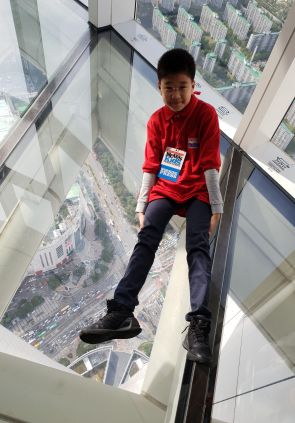
Writing the story
Many grown-up reporters know that few things are more fun—or fascinating—than field reporting, whether it’s from a wolf sanctuary, a race track, or one of the world’s tallest buildings. Eleven-year-old John Woo of South Korea got a 360° view from the top of the Lotte Tower in Seoul. The building is 1,821 feet tall, John reported for our young readers, making it 45 feet taller than One World Trade Center in New York City.
Sitting down to write the story is when the hard work begins. “A good article,” Alula says, “transports readers and must be written by a reporter who is interested in the subject.”
For Andrew Raymundo, 12, of Florida, “the main challenge, besides collecting the information, is to report in an entertaining and understandable way, while also staying unbiased.”
Andrew recently wrote a fantastic story about the Rubik’s Cube, the best-selling toy in history.
“The day I interviewed speedcuber Phil Yu was one of the most exciting I’ve ever had,” Andrew says. “The interview was at 11 a.m. Before that, I had to go to a student government meeting and a health class. Normally, this is not a problem. But that day, I could barely concentrate knowing that right after class I’d be talking to one of the most famous cubers in the world.”
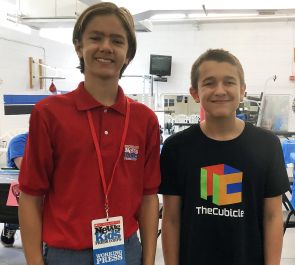
Taking on the tough stuff
Our Kid Reporters are growing up in a world with seemingly endless challenges. At ages 11, 12, and 13, that is not lost on them. Jaxon Jones, 11, wrote movingly about losing his home after last fall’s devastating fires in California.
“Although adversity can be challenging, it also can bring out the best in people,” Jaxon writes. “I will carry that spirit with me as we start the long process of rebuilding.”

Fifteen-year-old Zhang En of Malaysia found that “fast fashion” is contributing to environmental pollution and endangering the lives of garment workers in developing countries.
“Producing clothing quickly and cheaply often means dangerous working conditions, low wages, and a lack of basic human rights,” Zhang En writes.

News for kids, by kids
As editor of the Kids Press Corps, I think that the program offers an invaluable opportunity for young people to learn the basics of reporting and writing for a global audience. I might be biased. But I’ve watched our reporters grow into confident, curious, and empathetic journalists who are telling the story of their generation. What could be more important?
If you know a kid with a nose for news, the application process for the 2019-’20 school year is open through May 31. Kids between the ages of 10 and 14 are welcome to apply. You can learn more here.
Photos: Scholastic News Kids Press Corps

